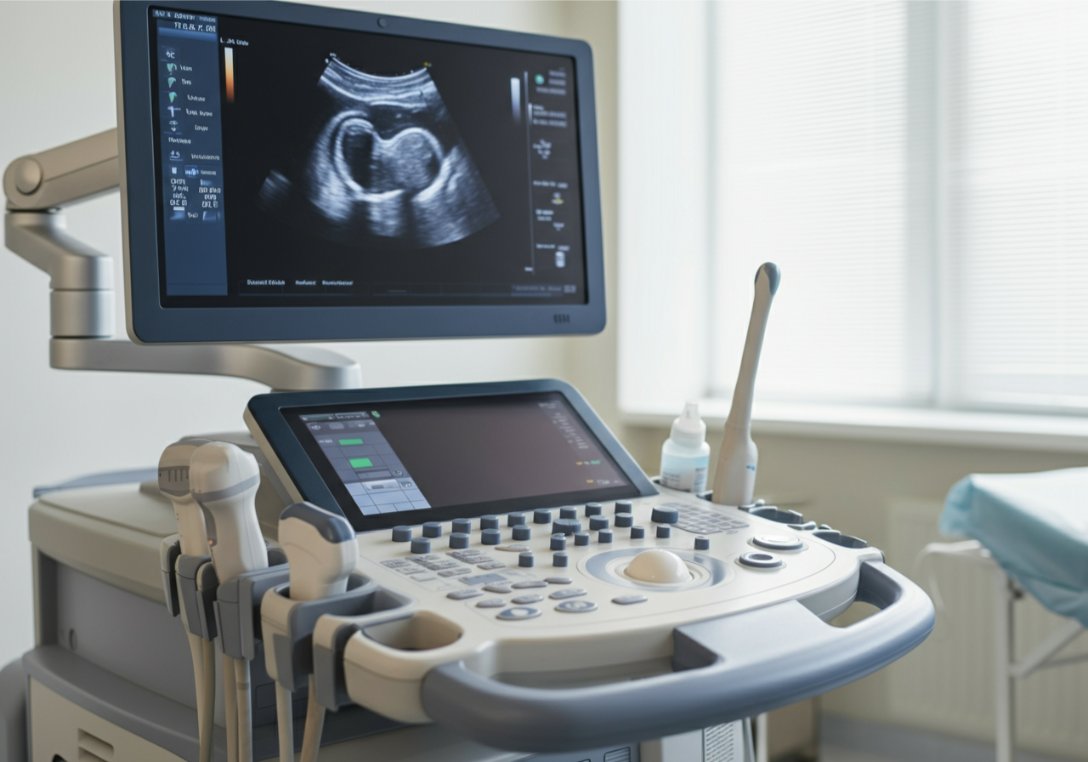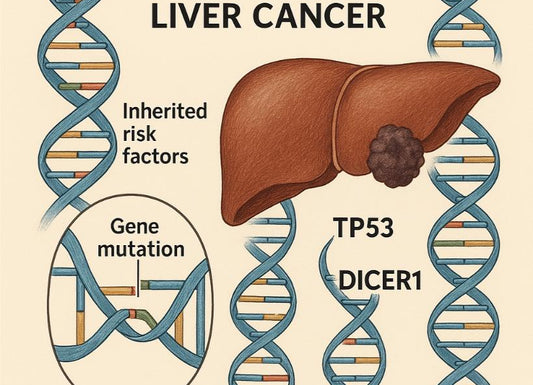Why Would a Doctor Order a Liver Ultrasound?
 Written By
Abel Tamirat, MD
Written By
Abel Tamirat, MD

If your doctor has ordered a liver ultrasound, you might be wondering what it means and what they’re looking for. A liver ultrasound is a safe, painless, and noninvasive test that helps doctors evaluate the health, size, and texture of your liver.
It’s one of the most common imaging studies used to assess liver conditions because it provides clear, real-time images without radiation exposure.
This article explains why doctors order liver ultrasounds, what the test can detect, and what to expect before and after the procedure.
What Is a Liver Ultrasound?
A liver ultrasound — also called a hepatic ultrasound — uses high-frequency sound waves to create images of your liver and surrounding organs.
The test helps doctors see inside the liver to check for abnormalities such as fat buildup, scarring, cysts, or tumors. Unlike CT scans or MRIs, ultrasounds do not involve radiation or contrast dye, making them especially safe for people with liver disease or kidney concerns.
During the test, a technician (sonographer) applies a gel to your abdomen and moves a handheld device called a transducer over your skin. The transducer sends sound waves into your body and captures the echoes as they bounce back, forming an image on a monitor.
The entire procedure usually takes 15 to 30 minutes and does not require sedation or recovery time.
If your ultrasound shows early signs of liver stress, you can learn more about at-home monitoring in our guide to liver tests.
Common Reasons for a Liver Ultrasound

Doctors may order a liver ultrasound for several reasons. It’s often one of the first steps in evaluating liver function or investigating symptoms related to the digestive system.
1. To Check for Fatty Liver Disease
Fatty liver disease is one of the most common reasons for liver ultrasounds. The test can detect the presence of fat deposits within the liver, helping diagnose both nonalcoholic fatty liver disease (NAFLD) and alcohol-related fatty liver.
If the ultrasound shows increased brightness (echogenicity), it may indicate fat accumulation. Your doctor may use this information to guide dietary and lifestyle recommendations or order further tests.
2. To Evaluate Liver Enzyme Abnormalities
If your blood tests show elevated liver enzymes — such as ALT, AST, or ALP — your doctor may order an ultrasound to find out why.
Abnormal liver enzymes can result from fatty liver, inflammation, infection, medication effects, or other underlying issues. The ultrasound helps visualize structural changes that might explain the abnormal results.
3. To Detect Liver Enlargement or Shrinkage
An ultrasound can measure the liver’s size and shape. An enlarged liver (hepatomegaly) can indicate inflammation, heart failure, or certain infections, while a shrunken liver may suggest advanced scarring or cirrhosis.
4. To Identify Liver Cysts, Tumors, or Masses
Ultrasound can reveal both benign and potentially serious liver growths. These include simple cysts, hemangiomas (blood vessel growths), or tumors. If a mass is detected, your doctor may recommend a CT scan, MRI, or biopsy for further evaluation.
5. To Assess Cirrhosis or Liver Scarring
Cirrhosis causes the liver to become hardened and nodular. While ultrasound cannot measure liver stiffness directly, it can show textural changes and other signs of chronic damage.
Newer types of ultrasound, such as elastography or FibroScan, can measure liver stiffness more precisely to estimate the degree of fibrosis (scarring).
6. To Investigate Jaundice
If your skin or eyes appear yellow, your doctor may order a liver ultrasound to check for bile duct obstruction, gallstones, or liver inflammation. The test helps determine whether jaundice is caused by a liver condition or a blockage in the biliary system.
7. To Monitor Chronic Liver Disease
People with hepatitis B, hepatitis C, or long-standing liver disease often undergo routine ultrasounds every 6 to 12 months to monitor for complications such as cirrhosis or liver cancer.
Regular imaging allows early detection and better management of potential issues before symptoms appear.
8. To Detect Ascites (Fluid in the Abdomen)
In advanced liver disease, fluid can accumulate in the abdomen — a condition called ascites. An ultrasound can confirm the presence of fluid and help guide paracentesis (a procedure to remove it).
9. To Guide Procedures
Ultrasound guidance is often used during medical procedures involving the liver, such as biopsies, fluid drainage, or targeted treatments. It helps doctors position needles precisely and safely.
What a Liver Ultrasound Can Detect
A liver ultrasound provides valuable insight into the structure and texture of the liver. It can detect:
-
Fatty deposits or inflammation.
-
Cysts or fluid-filled sacs.
-
Tumors or abnormal growths.
-
Liver size changes or irregularities.
-
Blockages in bile ducts.
-
Blood flow changes in hepatic vessels (with Doppler ultrasound).
However, it’s important to note that while ultrasound is excellent for detecting structural abnormalities, it doesn’t always show early or microscopic disease. Additional tests like CT, MRI, or biopsy may be needed for more detail.
Preparing for a Liver Ultrasound

Preparation for a liver ultrasound is simple but important to ensure accurate images.
-
Fasting: You may need to avoid eating or drinking for 6 to 8 hours before the exam. Food can produce gas in the intestines that interferes with the image quality.
-
Medications: Usually, you can continue your regular medicines unless your doctor advises otherwise.
-
Comfortable clothing: Wear loose-fitting clothes or expect to change into a medical gown.
Your healthcare provider will give you specific instructions based on your situation.
Because liver and kidney health are closely connected, it may also help to review our complete guide to at-home kidney function tests.
During the Procedure
-
You’ll lie on an examination table with your right arm raised above your head.
-
A gel is applied to your upper abdomen to help the transducer make good contact with your skin.
-
The technician gently moves the device over your abdomen while capturing images.
-
You may be asked to hold your breath briefly to improve the clarity of certain images.
You’ll feel slight pressure from the transducer, but the test is painless and doesn’t require recovery time.
After the Ultrasound
There are no side effects or restrictions after a liver ultrasound. You can immediately return to your normal activities and diet.
A radiologist reviews the images and sends a report to your doctor, who will discuss the results with you. If the ultrasound shows abnormalities, your doctor may order additional tests such as:
-
Blood tests to check liver function.
-
CT or MRI scans for detailed imaging.
-
Liver biopsy if tissue analysis is needed.
Changes in urine composition can also reflect liver or metabolic issues — explore our overview on glucose in urine to understand possible causes.
When to Ask Your Doctor About a Liver Ultrasound
You might want to discuss a liver ultrasound with your healthcare provider if you experience symptoms such as:
-
Persistent fatigue or weakness.
-
Abdominal pain or swelling.
-
Yellowing of the skin or eyes (jaundice).
-
Unexplained weight loss.
-
Dark urine or pale stools.
-
Ongoing nausea or loss of appetite.
These symptoms can indicate liver or gallbladder problems that are easily visualized with ultrasound.
How Often Should You Get a Liver Ultrasound?

For people with normal liver function and no symptoms, routine ultrasounds aren’t necessary. However, regular imaging may be recommended if you:
-
Have chronic hepatitis B or C.
-
Have been diagnosed with fatty liver or cirrhosis.
-
Drink alcohol regularly or have a history of heavy use.
-
Have elevated liver enzymes or a family history of liver disease.
Most specialists recommend follow-up ultrasounds every 6 to 12 months for high-risk individuals to detect early signs of liver complications.
The Bottom Line
A liver ultrasound is one of the most useful and noninvasive tools for evaluating liver health. Your doctor may order it to investigate symptoms, check abnormal test results, or monitor an existing condition.
The test is quick, safe, and highly effective at detecting structural changes such as fat buildup, cysts, or scarring. If an issue is found, your doctor will guide you through the next steps to ensure timely care and treatment.
Taking this test is an important step toward understanding your liver health and preventing future complications.
Want to check your liver health from home?
You can take an at-home liver enzyme and metabolic test through Ribbon Checkup and get detailed results in days.
Related Resources
-
Does Stress Cause Elevated Liver Enzymes? Exploring the Connection
Understand how chronic stress may impact your liver and elevate enzyme levels — even in the absence of other risk factors. -
Life Expectancy with Fatty Liver Disease: What You Need to Know
Learn how fatty liver disease affects long-term health and what lifestyle choices can improve prognosis. -
Does Exercise Help Liver Cirrhosis?
Explore the science behind physical activity and how it can support liver function, even in advanced stages.
References
-
Cleveland Clinic. (n.d.). Liver ultrasound: Why it's done, prep, procedure & results. https://my.clevelandclinic.org/health/diagnostics/liver-ultrasound
-
Cleveland Clinic. (2023, July 11). Abdominal ultrasound: What it is, purpose, procedure & results. https://my.clevelandclinic.org/health/diagnostics/4994-abdominal-ultrasound
-
Mayo Clinic. (2024, November 5). Abdominal ultrasound. https://www.mayoclinic.org/tests-procedures/abdominal-ultrasound/about/pac-20392738
-
Mayo Clinic. (2024, May 3). Ultrasound. https://www.mayoclinic.org/tests-procedures/ultrasound/about/pac-20395177
-
MedlinePlus. (2024, July 15). Abdominal ultrasound. U.S. National Library of Medicine. https://medlineplus.gov/ency/article/003777.htm
-
National Institute of Diabetes and Digestive and Kidney Diseases. (2025). Diagnosis of cirrhosis. https://www.niddk.nih.gov/health-information/liver-disease/cirrhosis/diagnosis
-
National Institute of Diabetes and Digestive and Kidney Diseases. (2025). Diagnosis of NAFLD & NASH. https://www.niddk.nih.gov/health-information/liver-disease/nafld-nash/diagnosis
-
RadiologyInfo.org. (n.d.). Abdominal ultrasound. https://www.radiologyinfo.org/en/info/abdominus
-
RadiologyInfo.org. (n.d.). Abdominal contrast-enhanced ultrasound (CEUS). https://www.radiologyinfo.org/en/info/contrast-enhanced-ultrasound

Dr. Abel Tamirat is a licensed General Practitioner and ECFMG-certified international medical graduate with over three years of experience supporting U.S.-based telehealth and primary care practices. As a freelance medical writer and Virtual Clinical Support Specialist, he blends frontline clinical expertise with a passion for health technology and evidence-based content. He is also a contributor to Continuing Medical Education (CME) programs.



